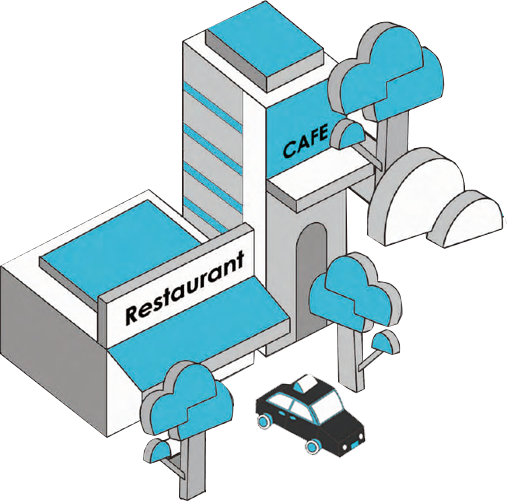China. As an entrepreneur, he believes the following about marketing:
Marketing is deeply involved in every aspect of a start-up, but to a foreign entrepreneur who has recently arrived in Shenzhen, it is an enormous challenge to grow a customer base within the capabilities of a company. This is especially true in China, where the cultural and social media environment is remarkable different from other countries.
Here are some mainstream marketing methods that have been proven to be effective:
ShenzhenParty has been in operation for 12 years, and was already profitable from its early days. Around 500,000 users from around the world log on to the website every year to catch up on the latest updates and information. As an online company, ShenzhenParty's growth is heavily reliant on online marketing. Its founder Brent Deverman was networking a lot offline during the early days of the company. He took part in various events and recommended his company to people one-on-one, which eventually paid off. After that, he focused on Search Engine Optimization (SEO) marketing to expand his user base.
He started with Google SEO where he improved the ShenzhenParty's site Google search ranking by creating content with high relevancy, which helped push up the number of visitors to the site. After Facebook took the internet by storm, he did the same and invited all his Facebook friends to like his site.
As a Shenzhen-based start-up, Brent was also closely following the social media trends in China. Initially, newsletters were one of the main mediums for publicity used by Brent. However, when WeChat started emerging, he imported the contacts on his phone into his WeChat friends list, and set up a WeChat public account. Articles on the public account were updated 5 to 6 times every week, and with simultaneously release on the website.
At the same time, Brent was also in sync with global user habits on social media, and frequently shared information related to Shenzhen on Facebook and Instagram, to convey to the users that they were an active and engaging site. In the meantime, ShenzhenParty also made use of opportunities working with partners such as local Key Opinion Leaders (KOL), event organizers, and chambers of commerce to generate a win-win outcome and build a symbiotic relationship.
2. Content
Similarly, to ShenzhenParty, MedAnt, a social platform for cancer patients in China, also relied on online marketing to increase its user numbers. As they operate in a field with a more specialized focus, on top of opening a WeChat public account, MedAnt has also been creating and releasing quality content that addresses topics such as treatment and nursing of cancer patients. Through a more professional tone, they were able to establish the core positioning of their brand.
As most of their current users are from China, MedAnt works with mainstream social media platforms in China, such as lifestyle sharing platform RED, to carry out KOL marketing. As of October 2018, RED had more than 150 million users. Considering the content that it generates, MedAnt also uses content platforms that are popular in China, such as Toutiao or Zhihu (similar to Quora) to disseminate its content and achieve user conversion.
3. Partners
Partnering with organizations or businesses that have established their own communities and networks is akin to "outsourcing" your marketing efforts, which can sometimes boost results enormously.
Gifted, started by Ricky and Kwesi, is focused on helping people discover their passion, an idea the founders have turned into a sustainable business. To find their users, Gifted built strategic relationships with partners who are adept at marketing, such as schools and organizations with channel resources, to help them with their marketing. This way they could also devote more time to building their product.
MedAnt collaborated with iCarbonX, a start-up in life digitization, in releasing a joint user study which attracted users with similar needs to join their platforms.
4. Community events
Offline public events can help entrepreneurs meet a relatively large number of people in a shorter period of time. Besides adding value to their companies, it also brings in new customers. In the early days of her company, Nausheen Ishtiaq-Chen, founder of film and television production company Zen & Zany, organized a series of workshop events. These not only helped her find employees, it also established her reputation which would become an important factor later on that brought in clients for her.
Through offline activities such as meetings, interviews and site visits, Trouble Makerwas able to establish its presence in different groups and communities, such as business organizations, news media, researchers and foreign incubators. After the events, these people would share their experiences on social media, which would eventually turn into word-of-mouth publicity. At the same time, Trouble Maker also recognizes the need of Chinese users for training courses conducted in English. So, it began providing offline maker training courses, which also further strengthened the brand.
When it first started, digital marketing company Somos Digital participated frequently in cross-border e-commerce community events that catered mainly for Amazon sellers. They gave talks on topics involving overseas marketing expansion, which were well-received by their early customers.
5. Off-line Marketing
For certain start-ups, the target customers are not online, and so on-ground publicity becomes a more effective way of promoting the business and may even save more costs.
ShenzhenEat is a start-up that provides food-ordering services to foreigners. Having operated for five years, it now has an average of 10,000 active monthly users, and a revenue of up to RMB 1 million per month. The marketing approach used by its founder Chris Butt is fairly traditional: Displaying"Order on ShenzhenEat" stickers on the windows of restaurants. Foreigners new in Shenzhen are likely eager to explore their dining options. When they see these stickers at a restaurant or while passing by, they usually sign up as registered users. Also, since 80% of ShenzhenEat' s users are from the Shekou area, Chris would look for streets with high food traffic and partner with hawkers on these streets, such as a small cigarette stores, and pay them a small fee to place his ad banner next to the store.
Jeff J. Brown also used a similar method for on-ground publicity. The tuition school that he opened is situated between Longzhu Middle School and the International School of Nanshan, with many families living around the area. His school is located at street-level, and its entrance is a fully transparent floor-to-ceiling window, with a lamp that would stay lit the whole day. Every day after school, the droves of students passing by would be able to see clearly what was happening in the school. Meanwhile, Jeff also printed fliers for his school in English and Chinese, and left them in the information box by the entrance for anyone who was interested. Jeff says this way the "marketing cost is close to zero". Every week now Jeff teaches close to 70 students.
6. Word of mouth
In certain fields that have stronger offline presence, word of mouth is the main publicity tool. To earn recommendations, you will need successful user experiences to speak on your behalf. Therefore, it may turn out to be a better idea when the business is still young to focus on refining the product and improving the quality of the service, instead of investing too much energy and money n online marketing.
Soulfato is a business consultancy company that helps foreign companies to set themselves up in China. Its founder Nuno Batista shared that he had built a website and social media channels for the company a few years earlier, but with very low customer conversion rate. Many inquirers did not end up as real signing customers, so he decided to shut these channels down.










